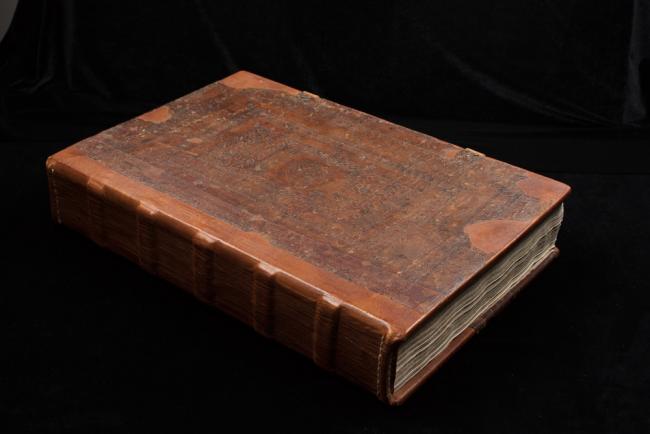
Hello! I'm Anna Siebach-Larsen, director of the Rossell Hope Robbins Library and Koller-Collins Center for English Studies. Let's take a look a look at the manuscript together. First, yes, it’s very old, but a majority of the binding is modern. However, this copy has remnants from the original tooled leather binding.
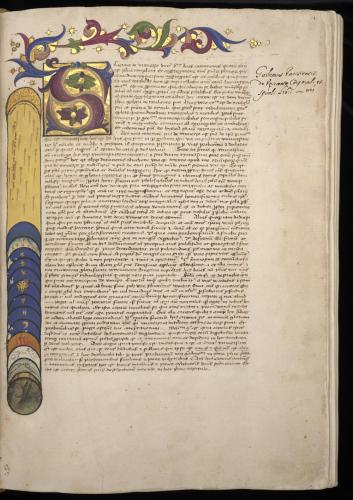
The illustration depicts the classical and medieval geocentric model of the universe, which places the earth at the center, with the planets and starts moving around it. This particular illustration, however, with the earth at the bottom of the diagram, is unusual and possibly unique.

Here, we’ve zoomed in on a section of the universe illustration. This section moves from the bottom upwards. It begins at the Earth, which is broken into the four elements: earth (complete with mountains and trees), water (with fishes), air (with flies), and fire. We then continue upward to the moon, Mercury, Venus, the sun, Mars, Jupiter, and Saturn. Beyond Saturn is the sphere of the “fixed stars” and then the primum mobile (the outermost sphere that was believed to move around the earth, carrying the inner spheres with it).

We’re now moving through the primum mobile into the coelum empyreum or “empyreal heaven.” This sphere does not move. It’s fiery, always full of light, and where God is believed to dwell. This section essentially goes beyond the illustrator’s imagination.
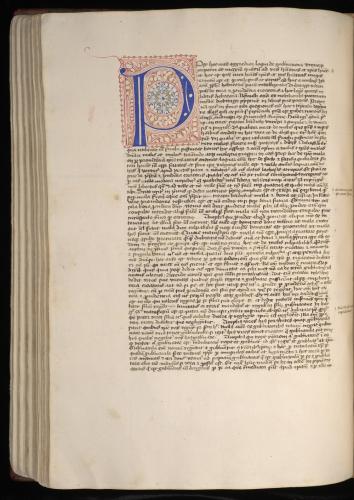
This large penwork P marks the beginning of a new section of the text (Part 1, Section 3). Artists used small compasses to draw the circles in these types of decorated initials. If you look at the actual page closely enough, you can see the tiny holes in the center of each circle and half-circle, left by the compass.
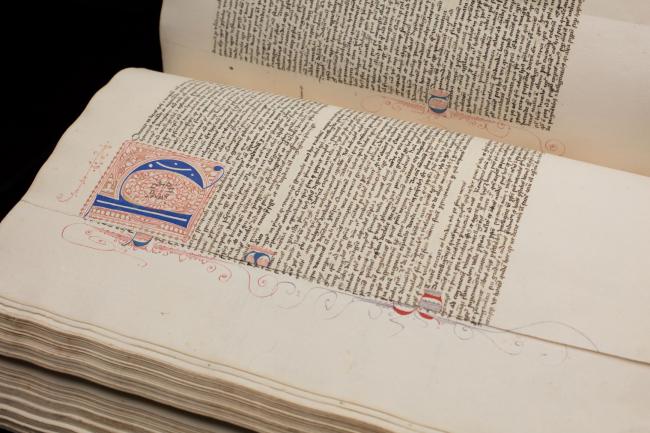
Although the elaborate H marks the beginning of Part 2, each smaller initials’ decorative penwork indicates a major sub-section of the treatise. This particular portion of the De universo analyzes the spiritual laws that govern the mechanisms of the universe. Some pages in the manuscript, like this one, have been cut. Why? We can’t be sure, but it’s likely they once contained illustrations that were deemed valuable enough to cut and sell.
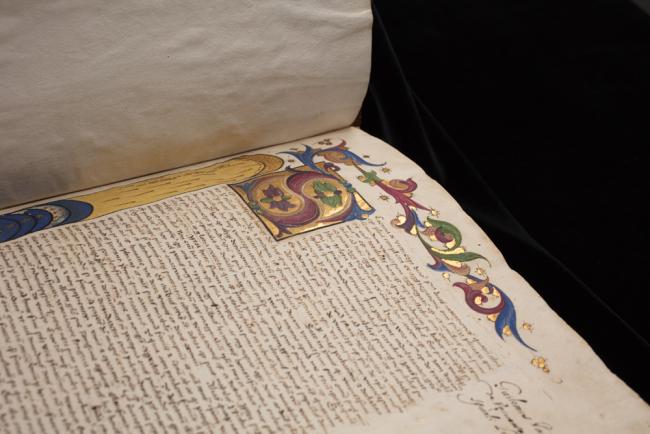
While you may not always be able to judge a book by its cover, you can judge this one by its first page. Many scientific and theological manuscripts were grubby, small, and heavily used by students and scholars. But this one, with its magnificent decoration, gold leaf, and immense size, was clearly made for a man—of great wealth and learning—who saw his books as a way to demonstrate his importance. That’s all for this manuscript. Thanks for following along! (Photos provided by the University of Rochester Digital Scholarship Lab)

